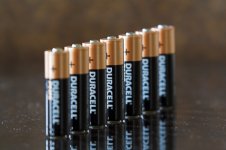Hi,
Took this with my Sigma 50-500mm and could someone tell me if it is correctly focussed. Or as good as I can expect.
Aim was centre battery, auto focus on, f5.6, iso 400,at 300mm focal length. Batteries were one inch apart.
Any advice gratefully acknowledged.
Andy
Took this with my Sigma 50-500mm and could someone tell me if it is correctly focussed. Or as good as I can expect.
Aim was centre battery, auto focus on, f5.6, iso 400,at 300mm focal length. Batteries were one inch apart.
Any advice gratefully acknowledged.
Andy





